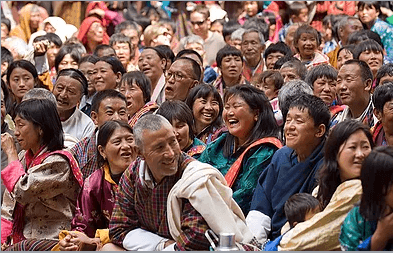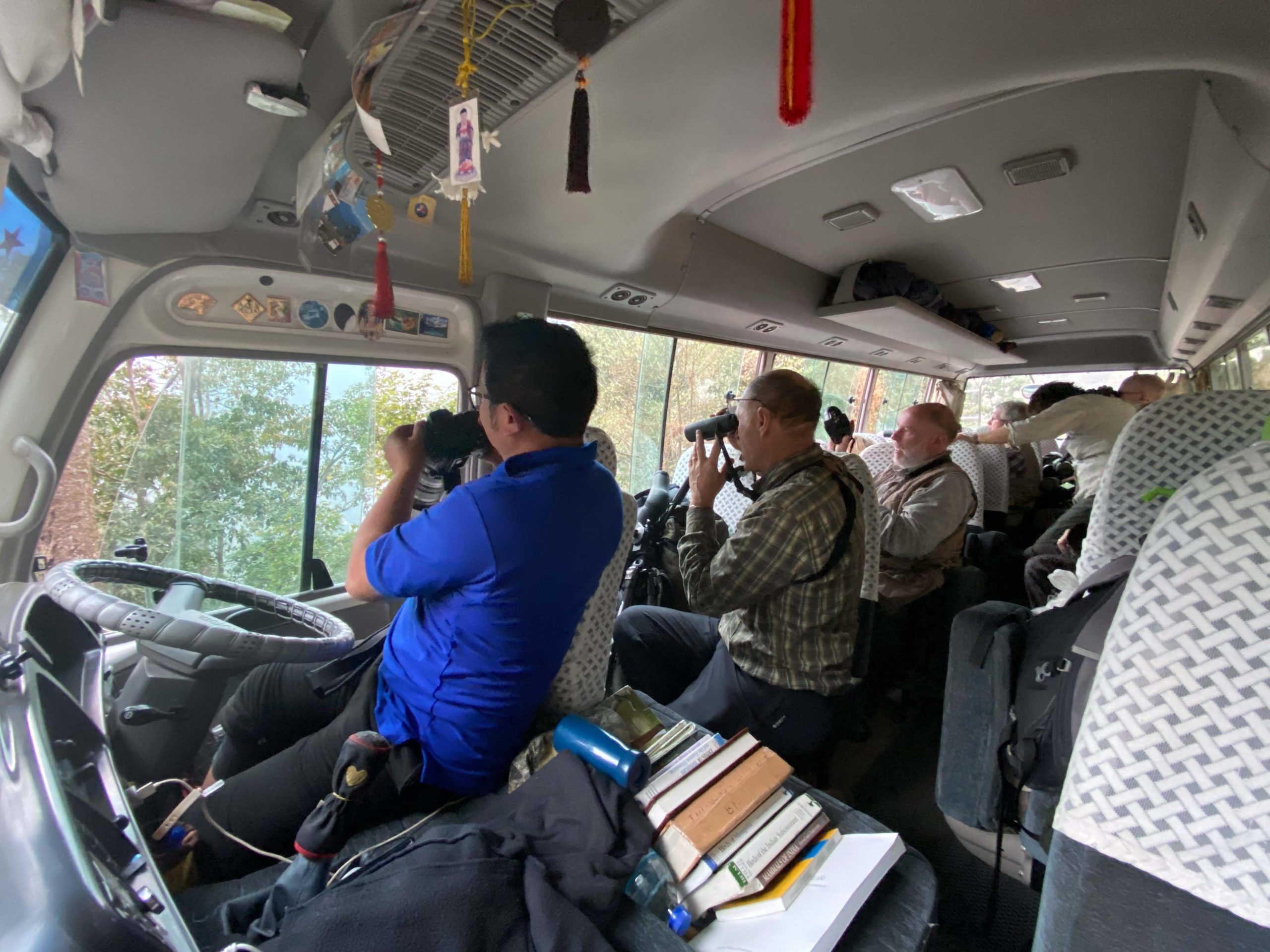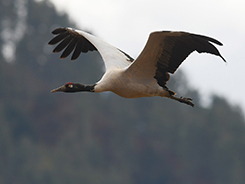10 Days – Short Bird Photography Tour in Bhutan



Trip Overview
Description
Bhutan has been protected by both its isolation within the Himalayas and the topography of its mountainous land, resulting in over 70% of the land remaining forested with 60% protected by 10 National Parks and Wildlife Sanctuaries. The diverse range of habitat varies from sub-tropical jungles at 150m to alpine meadows at over 4,500m, supporting an extraordinary range of birds and wildlife. Today, Bhutan has some of the best birding sites in the world with over 780 species of birds and lies within one of the 221 Global Endemic Bird Areas with 28 species of birds endemic to Eastern Himalayas.
Our Spring birding tour will take you through eastern Bhutan’s most beautiful landscape, where we should encounter some 350 species of birds including the country’s star attractions like the Satyr Tragopan, Rufous-necked Hornbill, Beautiful Nuthatch and Ward’s Trogon. In addition to the great number of birds, we should also find over 10 species of mammals and an amazing variety of butterflies and flowers.
There will also be time to see the amazing architecture, visit dzong’s and meet the friendly Bhutanese people and finally, witness the Trashigang Festival – a celebration of good over evil.
It is a land of the unknown, where culture and heritage remain the essence of life.
| Number of Guests | Price Per Guest |
|---|---|
| 1 | US $ 3,540 |
| 2 | US $ 3,540 |
| 3-12 | Twin sharing cost: US $ 3,360 |
Single Occupancy (Optional) – US $225
Flights are not included in the tour cost.
Brief Itinerary
Take the flight from Kolkata or Delhi into Guwahati. Travel 110 km to Samdrup Jongkhar, stopping en-route at Dipor Bil wetland and rubbish dumpsite to see plains birds like Greater and Lesser Adjutants, Purple Heron, Indian Pond Heron, White-breasted Waterhen, Purple Swamphen, Paddyfield Pipit, Black Kite, Little Cormorant, Pied Kingfisher, Asian Openbill, Eurasian Collared Dove, and Bronzed-winged Jacana.
At Samdrup Jongkhar, look for Red Junglefowl, Asian Koel, House Crow, Coppersmith Barbet, Fulvous-breasted Woodpecker, Greater Goldenback, Ashy Woodswallow, Black-naped Monarch, Chestnut-headed Bee-eater, Brown Shrike, Pale-chinned Flycatcher, White-rumped Shama, Yellow-vented Flowerpecker, Jungle Babbler, Red-whiskered Bulbul, Asian Pied Starling, Taiga Flycatcher, Yellow-bellied Warbler, Crimson Sunbird, Oriental Scops Owl, and Large-tailed Nightjar.
Overnight: Tashi Gasel Guesthouse or similar, Samdrup Jongkhar, 400m. (Meals: L, D)
Explore Samdrup Jongkhar and Deothang forests for birds like Wreathed and Oriental Pied Hornbills, Red-headed Trogon, Changeable Hawk Eagle, Jerdon’s Baza, Oriental Hobby, Thick-billed and Pin-tailed Green Pigeons, Crested Kingfisher, Emerald Dove, Streaked Spiderhunter, Plaintive and Grey-bellied Cuckoos, Blyth’s Kingfisher, Greater and Lesser Necklaced Laughingthrushes, Golden-fronted Leafbird, Blue-eared and Lineated Barbets, Chestnut-tailed Starling, Black-hooded Oriole, Striated Heron, Cattle and Intermediate Egrets, Green Bee-eater, Black-backed Forktail, Large Woodshrike, Thick-billed Warbler, Dusky Warbler, Aberrant Bush Warbler, Taiga Flycatcher, Scarlet Minivet, Siberian Rubythroat, Common Iora, White-throated Bulbul, Black-naped Monarch, Greater Racket-tailed Drongo, Chestnut-bellied Nuthatch, Little Spiderhunter, Puff-throated Babbler, Rufous-backed Sibia, Hooded Pitta, Asian Fairy Bluebird, Dollarbird, Lesser Coucal, Indian Roller, Ruby-cheeked Sunbird, Plain Flowerpecker, Oriental White-eye, Great Tit, Pin-striped Tit Babbler, House Sparrow, Jungle and Great Mynas, and Rosy Starling.
Also look out for orchids and butterflies.
Overnight: Dungsam Trashiling Resort or similar, Deothang, 800m. (Meals: B, L, D)
Travel through sub-tropical forests looking for Rufous-necked Hornbill, Blue-winged Laughingthrush, Lesser Cuckoo, Red-rumped Swallow, Pied Harrier, Long-tailed Broadbill, Scaly-breasted Munia. Morong valley offers Beautiful Nuthatch, Mountain Tailorbird, Coral-billed Scimitar Babbler, White-browed Shrike Babbler, Silver-eared Mesia, Long-tailed Sibia, Lesser Racket-tailed Drongo, White-throated Fantail, Black-throated Sunbird, Greater Rufous-headed Parrotbill, Striated Yuhina, and more.
Overnight: Druk Deothjung Resort or similar, Trashigang, 1,100m. (Meals: B, L, D)
Drive through Sheri Chhu valley, Yadi Loops, Kore La Pass (2,450m), looking for Hill Partridge, Asian Barred Owlet, Grey-sided Laughingthrush, Scarlet Finch, White-collard Blackbird, Black-chinned Yuhina, Rufous-winged Fulvetta, Brown-flanked Bush Warbler, Chestnut-crowned Warbler, Dark-sided and Grey-headed Canary Flycatchers. Lingmethang road may have Steppe Eagle, Tawny Fish Owl, Blue-naped Pitta, Rufous and Grey-capped Pygmy Woodpeckers, Bhutan Laughingthrush, Blue-capped Rock Thrush, Hair-crested Drongo, and more.
Overnight: Trogon Villa or Chengala Farmhouse, Yongkola, 1,800m. (Meals: B, L, D)
Spend two full days in pristine forests of Yongkola, Namling, Tshamang, Lingmethang. Key birds: Chestnut-breasted Partridge, Ward’s Trogon, Yellow-throated and Golden-breasted Fulvettas, Himalayan Wedge-billed Babbler, Long-billed Wren Babbler, Rufous-throated Wren Babbler, Spotted Elachura, Slender-billed Scimitar Babbler, Broad-billed Warbler, Black-headed Shrike-babbler, White-naped Yuhina, Black Bulbul, Scaly Laughingthrush, Orange-bellied Leafbird, Gould’s Sunbird, Rusty-fronted Barwing, Lesser Shortwing, White-gorgeted Flycatcher. Night drive for Bhutan Giant Flying Squirrel, Hodgson’s Frogmouth, Brown Wood Owl, Mountain Scops Owl, Collared Owlet.
Overnight: Trogon Villa or Chengala Farmhouse, Yongkola, 1,800m. (Meals: B, L, D)
Morning birding at Yongkola, then retrace back to Trashigang. Possible sightings: Rufous-bellied and Mountain Hawk Eagles, Crested Goshawk, Eurasian Sparrowhawk, Blue-bearded Bee-eater, Streaked Spiderhunter, Golden-throated Barbet, Rusty-cheeked Scimitar Babbler, Crimson Sunbird, White-browed Piculet, Rufous-necked and White-crested Laughingthrushes, Greater Yellownape, Grey-capped Pygmy and Rufous Woodpeckers, Blue-throated Barbet, Long-tailed Minivet, Long-tailed Shrike, Black Drongo, Grey Treepie, Ashy Bulbul, Green-billed Malkoha, Black-winged Cuckooshrike, Blue-winged Minla, White-bellied Erpornis.
Overnight: Druk Deojung Resort or similar, Trashigang, 1,100m. (Meals: B, L, D)
Short morning birding at Kanglung: Spot-bellied Eagle Owl, Grey Nightjar, Kalij Pheasant, Black and Crested Serpent Eagles, Blue Whistling Thrush, Barred Cuckoo Dove, Wedge-tailed Green Pigeon, Large Hawk Cuckoo, Collared Owlet, Great Barbet, Lesser Yellownape, Ashy Drongo, Wallcreeper. Return to Trashigang for the festival in Trashigang dzong with masked dances, acrobatic performances, and vibrant cultural displays.
Overnight: Druk Deojung Resort or similar, Trashigang, 1,100m. (Meals: B, L, D)
Retrace journey to Samdrup Jongkhar. Sightings may include Oriental Honey Buzzard, Shikra, Black-tailed Crake, Green-backed and Sultan Tits, Nepal Fulvetta, Oriental Turtle Dove, Whiskered and Stripe-throated Yuhinas, Grey Bushchat, Verditer Flycatcher, Fire-breasted Flowerpecker, Black-throated Sunbird, Olive-backed Pipit, Yellow-breasted Greenfinch, Yellow-rumped Honeyguide, Mountain Imperial Pigeon, Great Hornbill, Black-eared Shrike Babbler, Himalayan Bluetail, Rufous-breasted Bush Robin, Green-tailed Sunbird, Hoary-throated Barwing, Black-faced and White-throated Laughingthrushes, Plain Mountain Finch, Bay Woodpecker, Blyth’s Leaf Warbler, White-tailed Nuthatch, Rusty-flanked Treecreeper, Rufous-breasted Accentor, Tibetan Siskin, Blue-throated Barbet, Grey-chinned Minivet, Bronzed and Lesser Racket-tailed Drongos, Common Green Magpie, Black-crested Bulbul.
Overnight: Tashi Gasel Lodge or similar, Samdrup Jongkhar, 250m. (Meals: B, L, D)
Drive across Assam plains to Guwahati airport for flight to Kolkata or Delhi.
Meals: B







